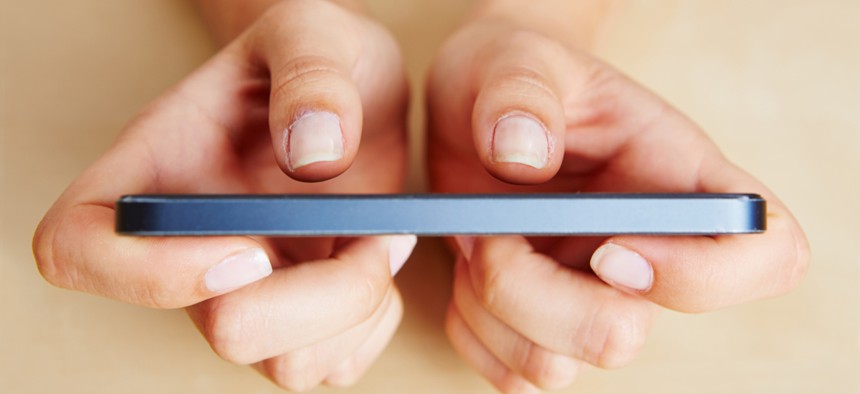Longer Thumbs Lead to More Smartphone Touch Errors

Robert Kneschke/Shutterstock.com
It's not your big, dumb thumbs, it's your long, dumb thumbs.
Computer scientists studied how the size and shape of hands and fingers influence the accuracy of the user’s touch performance on the phone. They found people with long thumbs are more likely to make errors on their touchscreens.
“Our study demonstrates that long thumbs alone can explain 12% of all the errors made [by] users that had to hit certain targets on the screen while holding the phone with one hand,” says Henning Pohl, a postdoc in the computer science department at the University of Copenhagen.
He and a group of computer science students are the first to put a number on how hand shape influences accuracy.
Big Hands and Thick Fingers
The conventional wisdom has been that big hands or thick fingers are to blame for the majority of errors. But that’s not the case, according to the researchers.
“It’s the length of your thumb, not its thickness, that makes the big difference,” Pohl says.
People with long thumbs are particularly challenged when it comes to accuracy at the bottom of the screen. The experiments demonstrate that the longer your thumb, the harder it is to guide it with precision in the lower corners.
“Even though we are constantly using touch technology, no one really knows why we users make the mistakes that we do. Neither do the big phone manufacturers—who settle for identifying and correcting errors rather than finding out what causes them. We hope that our research can help change that,” says Pohl.
Researchers conducted the trials with 27 participants, each equipped with two differently sized smartphones—an iPhone 6 and a Nexus 6P. Among other things, the computer scientists tested participants’ speed and accuracy at hitting a wide range of targets on their screens. They then analyzed a total of 54,000 touches in a computer model.
Smartphone Size Matters, Too
The findings also confirm that phone size plays a role in the quantity and nature of errors made.
“With a large phone, you have to stretch your hand more to adjust your grip and get from the top to the bottom of the screen. Therefore, on average, slightly more mistakes are made on large phones than on small ones,” Pohl says.
“The way you hold your phone also affects how many mistakes you make. And, the grip you choose is related to the size of your hand. If you have a big hand, you need to hold your phone differently than if you have a small hand.”
Pohl hopes that smartphone manufacturers will use the new findings to design phones that work better for all sorts of hands. In the meantime, the advice to consumers looking for a new phone is this:
“If you have big hands, you might be tempted to buy a really big phone. But our study suggests that this is not necessarily an advantage—at least, not when it comes to user experience. Before purchasing a phone, it’s a good idea to try holding it and see if you need to twist your hand in weird ways to reach the different parts of the screen.”
Researchers recently presented the paper at the 21st International Conference on Human-Computer Interaction with Mobile Devices and Services in Taiwan. The ERC under the EU’s Horizon 2020 program supported the work.
People with long thumbs have a tougher time hitting the right keys on their smartphone, according to a new study.
This article was originally published in Futurity. It has been republished under the Attribution 4.0 International license.





